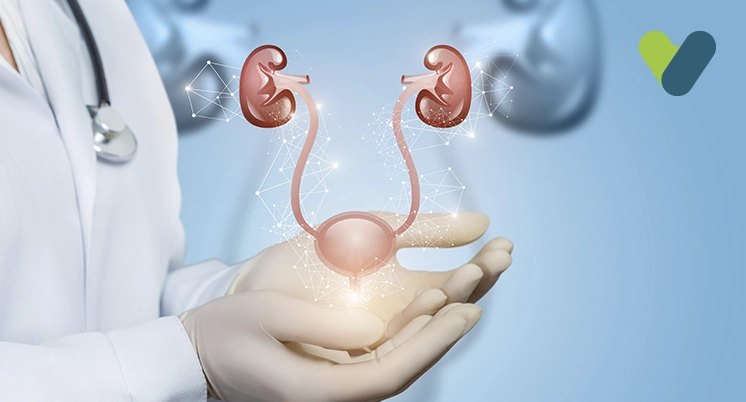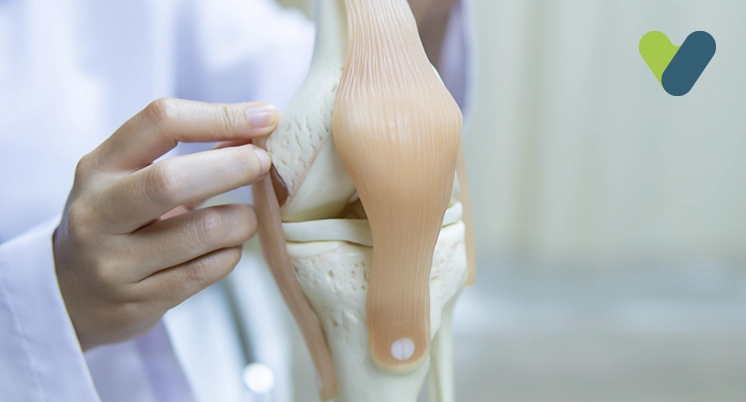What exactly is a caesarean section or caesarean surgery?
A c-section, also known as caesarean birth or caesarean section, is a surgical procedure used to deliver a baby through an incision or a cut made in the mother's abdomen and womb (uterus). This procedure is carried out when doctors believe that a c-section delivery would be safer for the mother and/or the baby than a vaginal delivery.
A c-section surgery can sometimes be planned in advance or performed in an emergency. It is riskier than vaginal delivery and requires a relatively long recovery period.
When is a caesarean delivery performed?
Patients who have certain medical conditions or complications during labour and/or during a vaginal delivery may require a caesarean delivery. In the event that any of the following scenarios or conditions exist, a planned c-section is performed:
Cephalopelvic disproportion: This occurs when the baby's body or head is too large to safely pass through the mother's pelvis, or the pelvis is just too small to safely deliver an average-sized baby.
Past c-section delivery: Although it is possible to go through a vaginal delivery after a prior c-section, it is not always an option. Factors that can influence this include the uterine incision type used in previous c-sections and the danger of uterine rupture.
Expecting twins: Even though twins frequently can be delivered through vaginal delivery, if there are two or more babies, this may necessitate a c-section.
Placenta previa: This condition occurs when the placenta is placed too low in the womb and prevents the baby from exiting through the cervix.
Transverse lie: In this condition, the baby is in the uterus in a sideways or horizontal position.
Breech presentation: It occurs when the baby is in the uterus feet-first. Some doctors may attempt to turn the baby, but if that fails, a c-section surgery will be required. Heart conditions: Heart conditions of a woman may worsen during labour or vaginal delivery.
Obstruction: A pelvic fracture, a large uterine fibroid, or being pregnant with a baby with congenital abnormalities are all factors for a C-section.
Should any of the below-mentioned conditions occur during the labour, an unplanned caesarean delivery may be required:
Labour is not progressing: This occurs when the cervix dilates and stops, does not efface (thin), or the baby does not move further down the birth canal.
Umbilical cord compression: This occurs when the umbilical cord is wrapped around the baby's body or neck or when it becomes entangled between the baby's head and the mother's pelvis.
Umbilical cord prolapse: This occurs when the umbilical cord protrudes from the cervix before the baby.
Placental abruption: This occurs when the placenta separates from the lining of the womb before the baby is born.
Foetal distress: During labour, the baby may develop issues that lead to an irregular heart rate. The doctor may make the decision that the baby is no longer able to tolerate labour and that a c-section is required.
How to prepare for a caesarean surgery?
- The patients will be guided through the process by the health professional, and they will have the opportunity to ask questions to their doctor.
- The patients will be required to complete a consent form granting permission to perform the procedure. If something is unclear, it is advised to read the form thoroughly and ask questions.
- The patients will be questioned about when they last ate or drank anything. If the c-section surgery is planned and necessitates general, epidural, or spinal anaesthesia, the patients will be asked to fast for 8 hours prior to the procedure.
- The patients should let the physician know if they are allergic or sensitive to any medication, iodine, latex, tape, or anaesthetics.
- The patients should inform the healthcare provider about any medications (both non-prescription and prescription), herbs, vitamins, or supplements they are taking.
- The patients should tell the doctor if they are taking blood thinners, aspirin, or have bleeding disorders because all these can affect blood clotting. The patients may be advised to discontinue these medications prior to the procedure.
- The patients may be given medication to reduce the acid in their stomachs. These also aid in the drying of secretions in the breathing passages and mouth.
- The patients should plan on having someone stay with them after the c-section. The patients may experience discomfort and pain during the initial days and require assistance with the baby.
Follow any other preparation instructions provided by the healthcare provider.
On the day of surgery, the patients can expect the following:
- The patients will be asked to remove all the jewellery and change into a hospital gown.
- The doctor or the medical team will:
-
- Insert a urinary catheter (to collect the urine)
- The area around the surgery site will be shaved
- Strapping of the patient's leg will be done to ensure that it stays put during the surgical procedure (for safety purposes)
- An intravenous catheter will be placed on the patient’s hand or forearm for IV medicines
- The patients will be transferred to the operating room. What to expect during the surgery? C-sections are performed in an operating room. The procedures may vary based on the patient's condition and the doctor's practices.
In general, a c-section is performed as follows:
- The patients will be administered anaesthesia and their vital signs, including blood pressure, heart rate, blood oxygen level, and breathing, will be monitored continuously during the whole surgical procedure.
- The surgical site will be cleaned with an antiseptic solution.
- After the anaesthesia has taken its effect, the doctor will make a vertical or transverse incision above the pubic bone. If the patients have received regional anaesthesia, they may be able to hear the sounds of the electrocautery machine used to stop the bleeding.
- Further to this, the doctor may go ahead with making a deeper incision through the tissues, and muscles will be separated until the uterine wall is approached. Then, a final uterine incision (horizontal or vertical) will be made.
- Then, the amniotic sac will be opened, and the baby will be delivered through the opening. The patients may feel some pull or pressure if they have regional anaesthesia.
- The doctor will then cut the umbilical cord.
- The patients will be given medication through IV to aid in uterine contraction and placental expulsion.
- The placenta will be then removed, and the uterus will be examined for placental pieces or uterine tears.
- After this, the uterine muscle incision will be closed with the help of sutures, and the uterus will be positioned back in the pelvic cavity.
- Muscles and tissue incisions will be closed layer by layer with the help of sutures. The doctor may use a staple or suture to close the skin incision.
- Finally, a sterile bandage will be applied by the doctor.
What to expect after a C-section?
Within the hospital- Nurses will monitor the patient's blood pressure, pulse, bleeding, and uterus firmness in the recovery room.
- Usually, the patients can stay with their babies in the recovery room. Babies born by caesarean section might require to be monitored for a short period of time.
- Breastfeeding can be initiated in the recovery room, just as it would be done after a vaginal delivery.
- The patient will be transferred to a hospital room for the remainder of their hospital stay after an hour or two in the recovery area.
- The patients may be given pain medicines as the anaesthesia wears off. This can be given through the intravenous (IV) line or orally.
- The patients may experience gas pains as the gastrointestinal tract recovers from surgery. The patients will be urged to step out of bed and start moving around and taking a walk, as this can help relieve gas pains. The doctor may also prescribe medication for this. The patients may experience a few uterine contractions known as after-pains for a couple of days following the c-section. Over the next several weeks, the womb continues to contract and decreases in size.
- The urinary catheter is typically removed the next day following the surgery.
- A few hours following surgery, the patients may be given fluids to drink. The patients can gradually increase the amount of solid foods in their diet as they are able.
- While in the hospital, the patient may be given antibiotics through IV as well as a prescription to continue taking antibiotics at home.
After hospital discharge/at home
- The patients have to use a sanitary napkin at home if they are bleeding. Vaginal bleeding and abdominal cramps are normal for a few days after birth. Over time, the discharge may change from a darker red to a lighter colour.
- The patients are advised not to douche (water showering the vagina), use tampons, or have sexual intercourse until the healthcare provider instructs.
- The patients may also be asked to refrain from engaging in strenuous physical activity, heavy lifting, or driving.
- Take only those medications, which the physician has prescribed. Take no aspirin or other pain relievers that may increase the risk of bleeding.
- Make an appointment with the healthcare provider for a follow-up visit. This typically occurs between 2 and 3 weeks after surgery.
What are the risks associated with a C-section?
A C-section could result in the following complications:- Reactions to drugs or anaesthetics used during surgery
- Bleeding
- Uterine infection
- Wound infection
- Urinary tract infection or difficulty urinating
- Abnormal placental separation, particularly in women who have had a previous caesarean delivery
- A bladder or bowel injury
- blood clots
The patient may face additional risks that are distinct to them. The patient should speak to their doctor to resolve all their queries.
When to consult a doctor?
If any of the following occur, contact the doctor right away:- Bad-smelling vaginal discharge
- Heavy vaginal bleeding
- Chills or fever
- Severe pain in the abdomen
- Excessive swelling, redness, pain, or bleeding from the incision
- Leg ache
- Breathing difficulties, chest pain, or palpitations in the heart
What is the caesarean delivery cost in India?
Several factors have a direct impact on the c-section cost in India. Examine the important factors that influence the overall cost of a caesarean section.- Diagnostic tests
- Consultation fees
- Surgical procedure
- Admission fees
- Patient's medical condition
- Age of the patient
- Room selected
- City or location
While cost is an important consideration, it is also critical to select an experienced and competent doctor and a respectable healthcare setting to ensure safe delivery and the best possible outcome for both the mother and baby.


